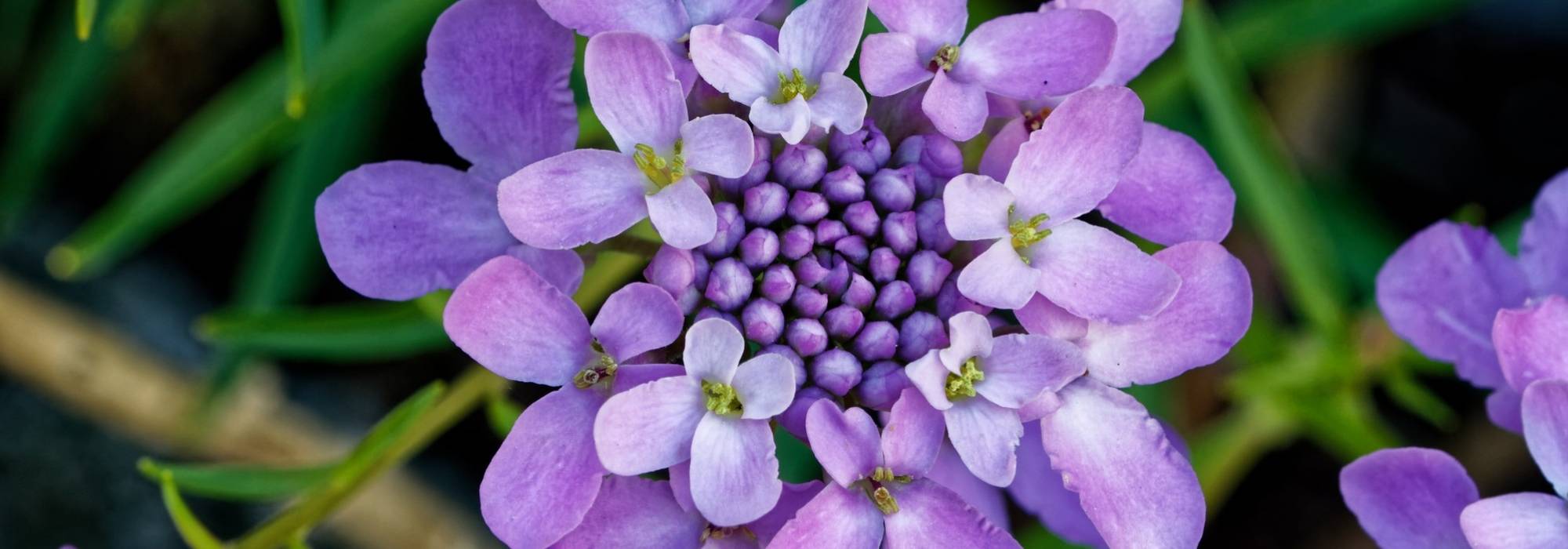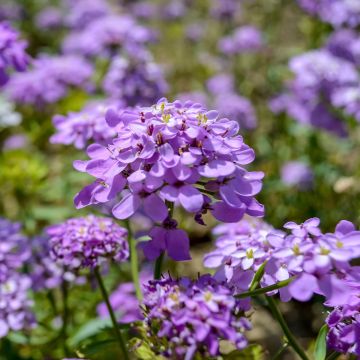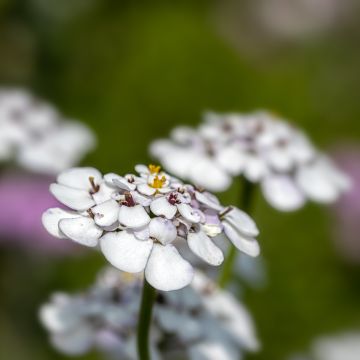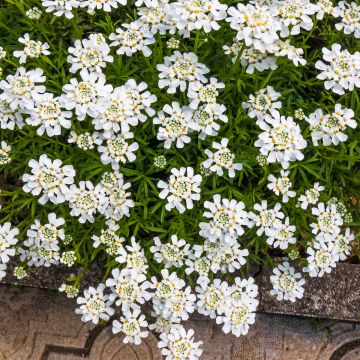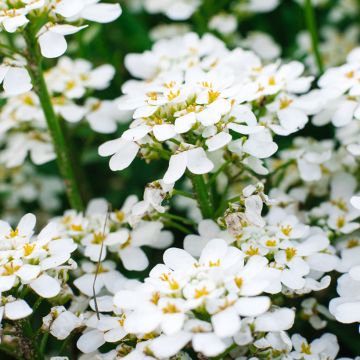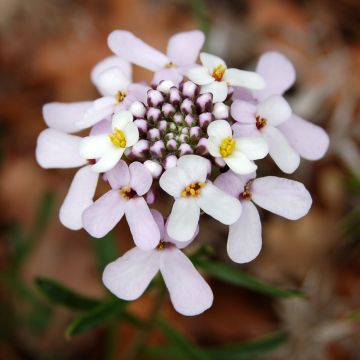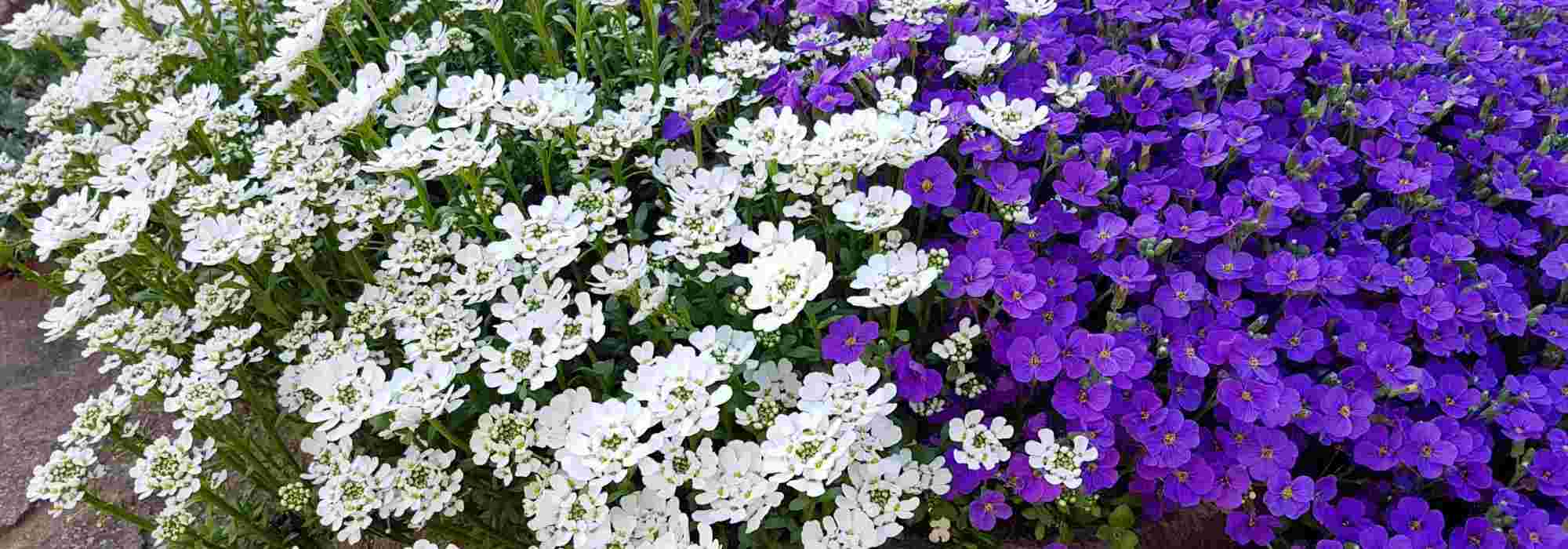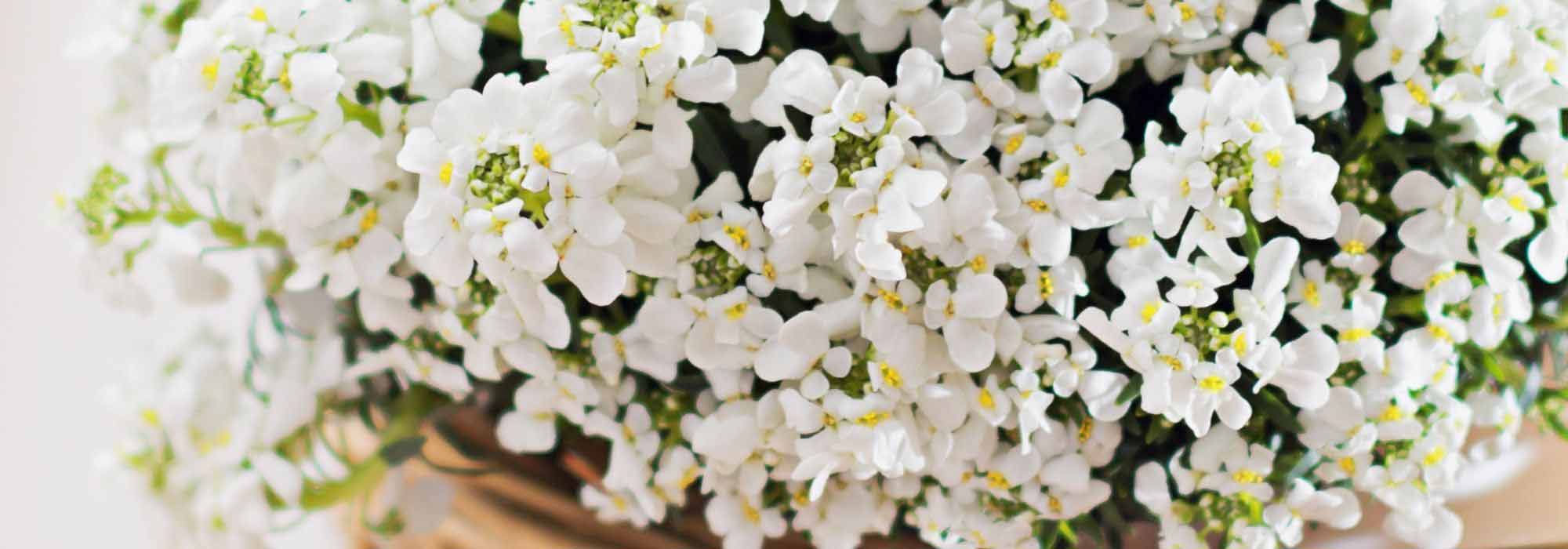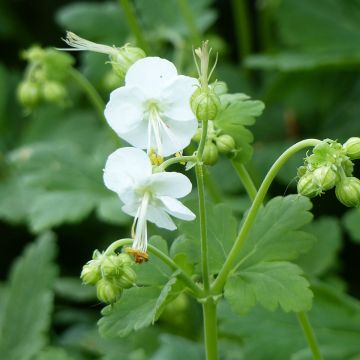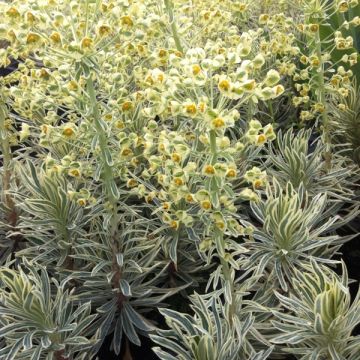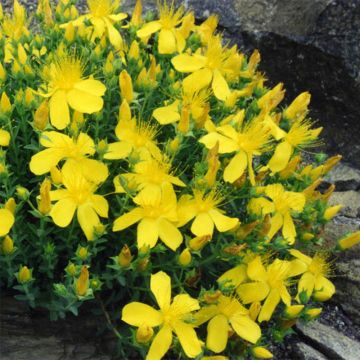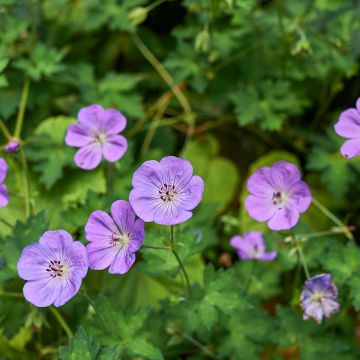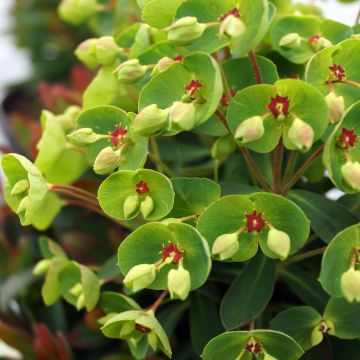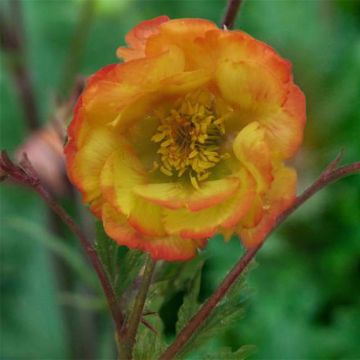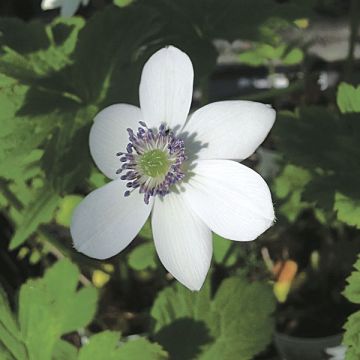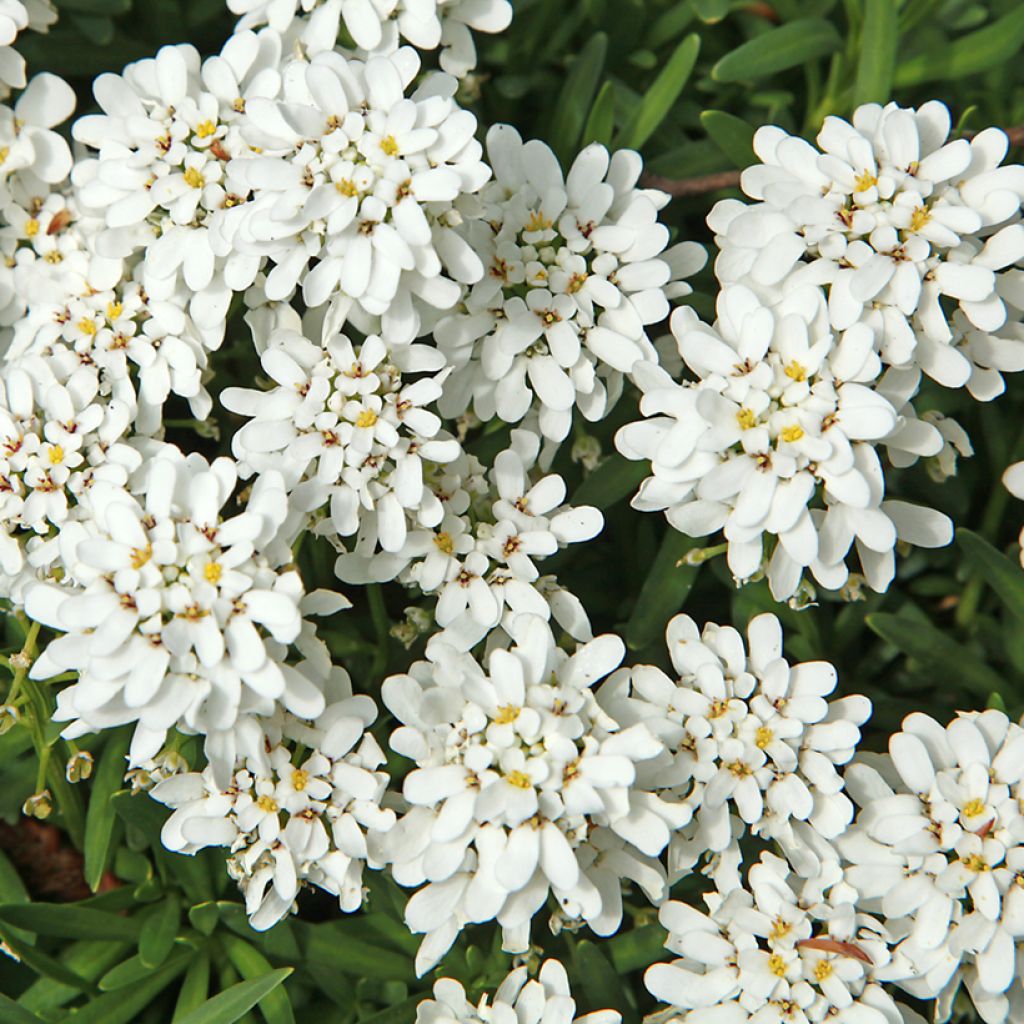

Iberis sempervirens Weisser Zwerg
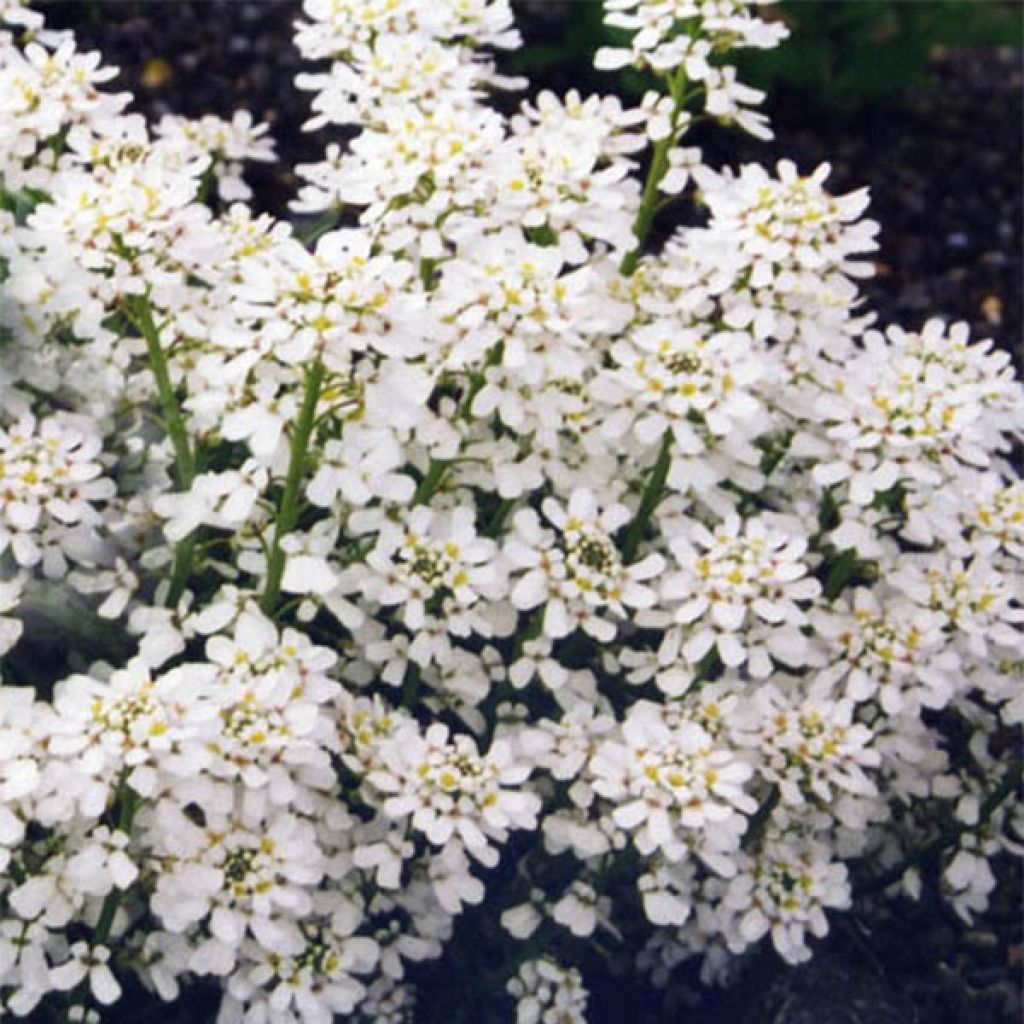

Iberis sempervirens Weisser Zwerg
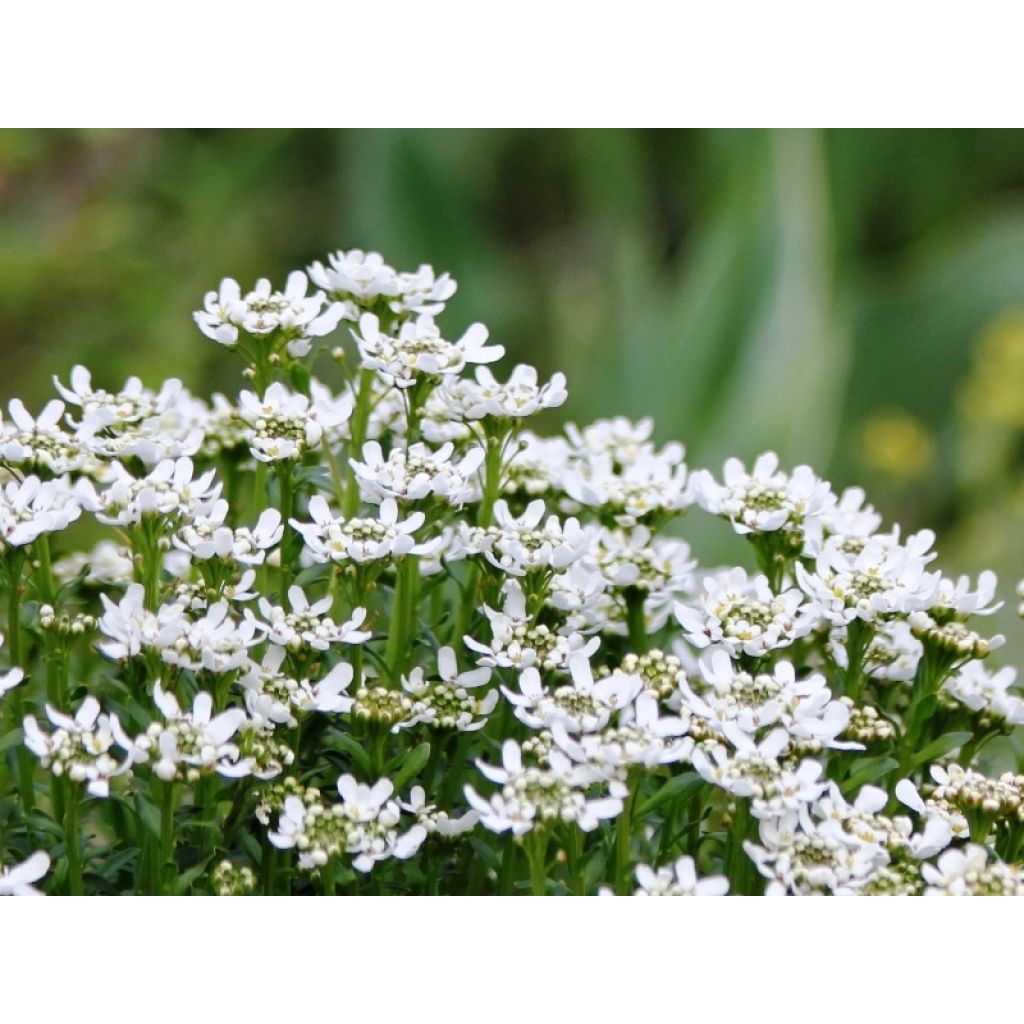

Iberis sempervirens Weisser Zwerg
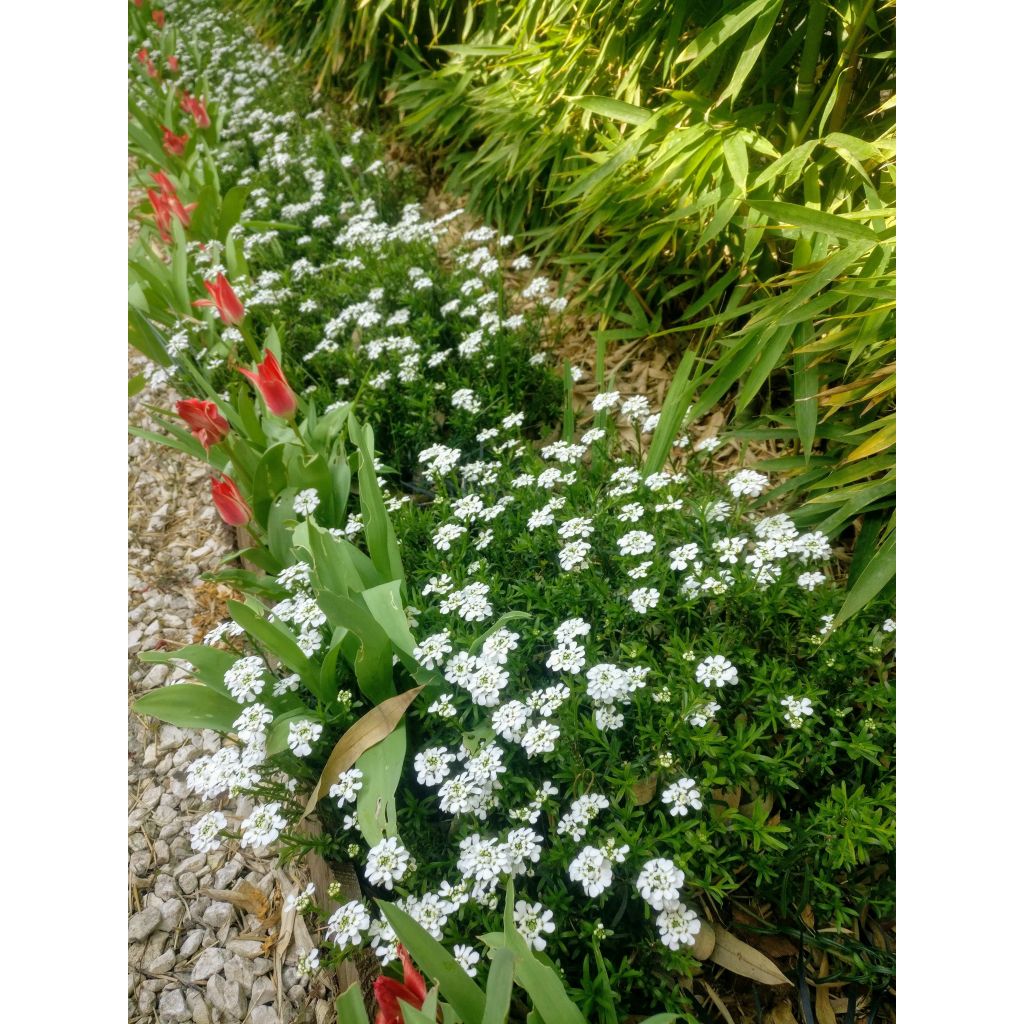

Iberis sempervirens Weisser Zwerg
Iberis sempervirens Weisser Zwerg
Iberis sempervirens Weisser Zwerg
Evergreen Candytuft, Perennial Candytuft, Thalspi
Thank you to the individuals (for order preparation and shipping), the Iberis received appear to be healthy. Planted along the edge of the rockery close to the variety "Appen-Etz", I am now patiently waiting for them to establish themselves... (or not?).
Thierry, 31/03/2023
Special offer!
Receive a €20 voucher for any order over €90 (excluding delivery costs, credit notes, and plastic-free options)!
1- Add your favorite plants to your cart.
2- Once you have reached €90, confirm your order (you can even choose the delivery date!).
3- As soon as your order is shipped, you will receive an email containing your voucher code, valid for 3 months (90 days).
Your voucher is unique and can only be used once, for any order with a minimum value of €20, excluding delivery costs.
Can be combined with other current offers, non-divisible and non-refundable.
Home or relay delivery (depending on size and destination)
Schedule delivery date,
and select date in basket
This plant carries a 12 months recovery warranty
More information
We guarantee the quality of our plants for a full growing cycle, and will replace at our expense any plant that fails to recover under normal climatic and planting conditions.

Does this plant fit my garden?
Set up your Plantfit profile →
Description
Iberis sempervirens 'Weisser Zwerg' is also called Candytuft for its beautiful and abundant spring flowering, with round clusters made up of pure white flowers. This shrub remains green all year round and is ideal for rock gardens and dry areas.
Iberis sempervirens 'Weisser Zwerg' is a compact shrub native to Southern Europe that can reach 15cm (6in) in height and 25cm (10in) in spread. Its evergreen or semi-evergreen leaves, depending on the severity of the climate, are dark green, narrow, slender, and with smooth margins. During the months of April to June, a wave of clusters of pure white flowers will cover the plant. Its 5cm (2in) clusters, composed of flowers with 2 pairs of opposite petals, white with brown or yellow stamens, gradually open from the outside to the inside of the cluster. As they fade, the flowers will take on a pale pink tinge.
A great companion in rock gardens, the Iberis sempervirens 'Weisser Zwerg' is hardy (-30°C (-22°F)) despite its Mediterranean origin. It likes well-drained, light, poor, and dry to moist soils. It tolerates limestone well. It requires minimal maintenance, which consists of removing the flower heads after flowering. Sunny exposures are preferred for its good development. In the garden, it will create beautiful flowering rock gardens, but it can also be used in the composition of sunny borders and slopes. It can be accompanied by hebes, yarrows, bellflowers, or even sandworts.
Iberis sempervirens Weisser Zwerg in pictures
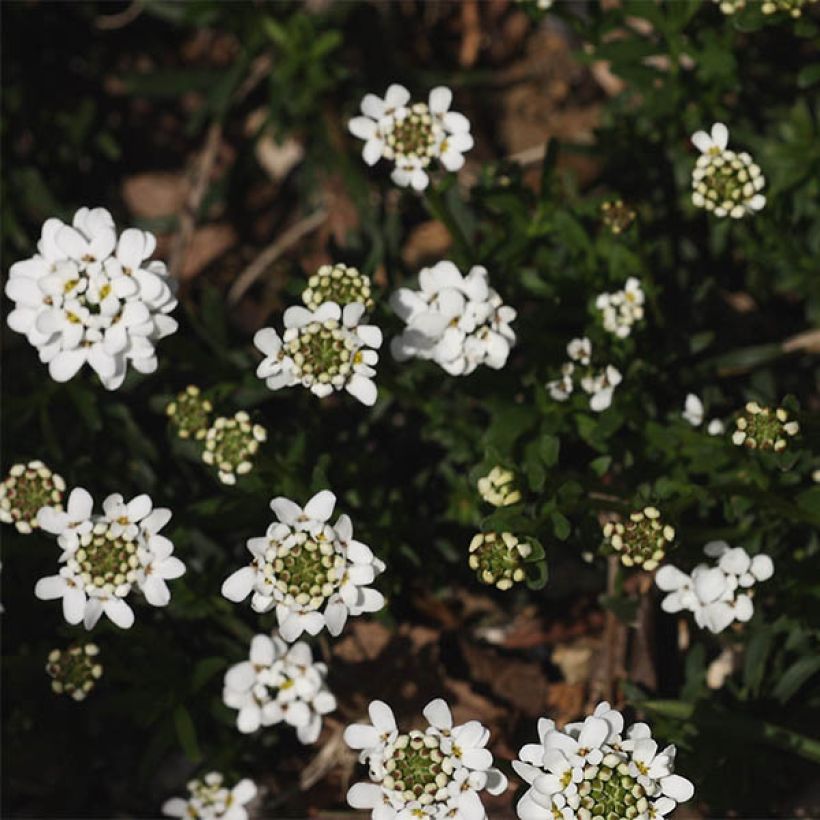

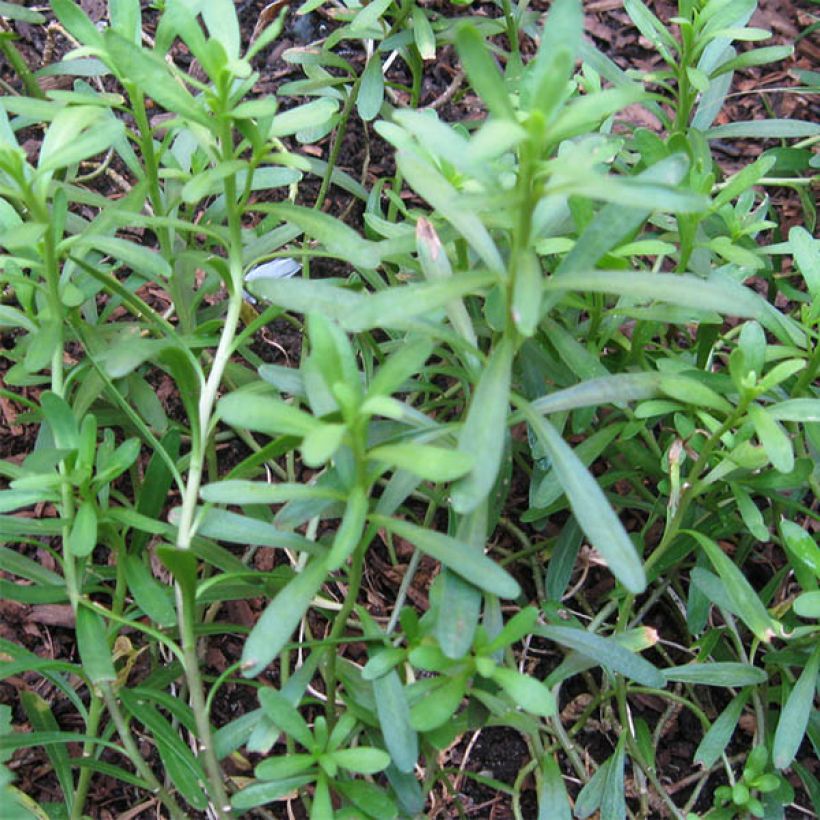

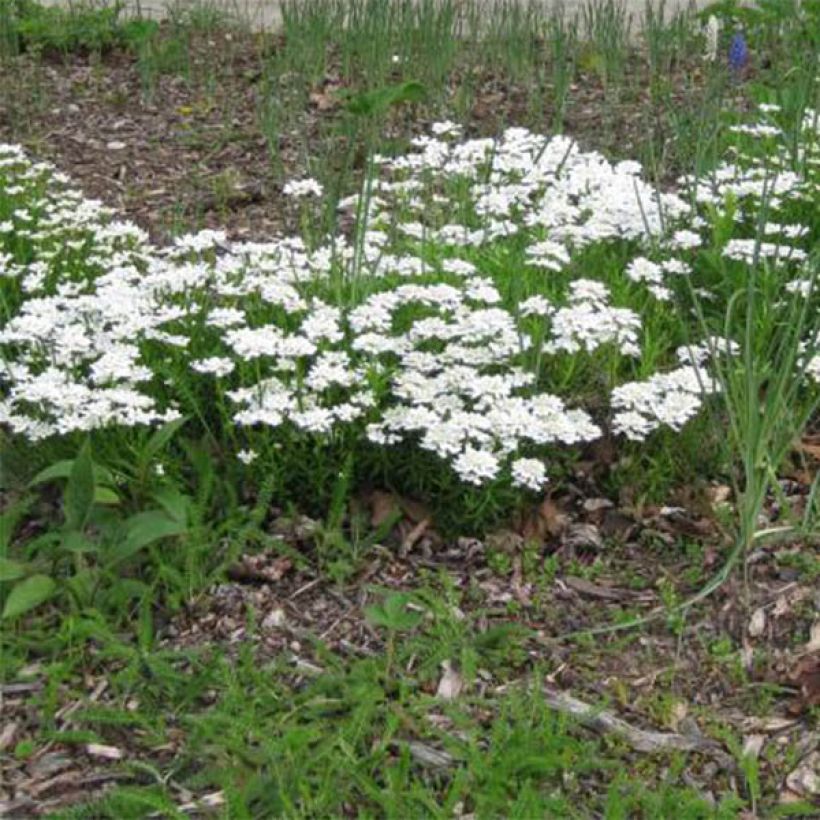

Flowering
Foliage
Plant habit
Botanical data
Iberis
sempervirens
Weisser Zwerg
Brassicaceae
Evergreen Candytuft, Perennial Candytuft, Thalspi
Mediterranean
Other Iberis
View all →Planting and care
Despite its origin, the Iberis sempervirens 'Weisser Zwerg' is highly cold-resistant and easy to cultivate in a very stony soil, even slightly chalky, in a scree garden, a gravel garden, or a steep slope, in full sunlight.
Planting period
Intended location
Care
Planting & care advice
-
, onOrder confirmed
Reply from on Promesse de fleurs
Similar products
Haven't found what you were looking for?
Hardiness is the lowest winter temperature a plant can endure without suffering serious damage or even dying. However, hardiness is affected by location (a sheltered area, such as a patio), protection (winter cover) and soil type (hardiness is improved by well-drained soil).

Photo Sharing Terms & Conditions
In order to encourage gardeners to interact and share their experiences, Promesse de fleurs offers various media enabling content to be uploaded onto its Site - in particular via the ‘Photo sharing’ module.
The User agrees to refrain from:
- Posting any content that is illegal, prejudicial, insulting, racist, inciteful to hatred, revisionist, contrary to public decency, that infringes on privacy or on the privacy rights of third parties, in particular the publicity rights of persons and goods, intellectual property rights, or the right to privacy.
- Submitting content on behalf of a third party;
- Impersonate the identity of a third party and/or publish any personal information about a third party;
In general, the User undertakes to refrain from any unethical behaviour.
All Content (in particular text, comments, files, images, photos, videos, creative works, etc.), which may be subject to property or intellectual property rights, image or other private rights, shall remain the property of the User, subject to the limited rights granted by the terms of the licence granted by Promesse de fleurs as stated below. Users are at liberty to publish or not to publish such Content on the Site, notably via the ‘Photo Sharing’ facility, and accept that this Content shall be made public and freely accessible, notably on the Internet.
Users further acknowledge, undertake to have ,and guarantee that they hold all necessary rights and permissions to publish such material on the Site, in particular with regard to the legislation in force pertaining to any privacy, property, intellectual property, image, or contractual rights, or rights of any other nature. By publishing such Content on the Site, Users acknowledge accepting full liability as publishers of the Content within the meaning of the law, and grant Promesse de fleurs, free of charge, an inclusive, worldwide licence for the said Content for the entire duration of its publication, including all reproduction, representation, up/downloading, displaying, performing, transmission, and storage rights.
Users also grant permission for their name to be linked to the Content and accept that this link may not always be made available.
By engaging in posting material, Users consent to their Content becoming automatically accessible on the Internet, in particular on other sites and/or blogs and/or web pages of the Promesse de fleurs site, including in particular social pages and the Promesse de fleurs catalogue.
Users may secure the removal of entrusted content free of charge by issuing a simple request via our contact form.
The flowering period indicated on our website applies to countries and regions located in USDA zone 8 (France, the United Kingdom, Ireland, the Netherlands, etc.)
It will vary according to where you live:
- In zones 9 to 10 (Italy, Spain, Greece, etc.), flowering will occur about 2 to 4 weeks earlier.
- In zones 6 to 7 (Germany, Poland, Slovenia, and lower mountainous regions), flowering will be delayed by 2 to 3 weeks.
- In zone 5 (Central Europe, Scandinavia), blooming will be delayed by 3 to 5 weeks.
In temperate climates, pruning of spring-flowering shrubs (forsythia, spireas, etc.) should be done just after flowering.
Pruning of summer-flowering shrubs (Indian Lilac, Perovskia, etc.) can be done in winter or spring.
In cold regions as well as with frost-sensitive plants, avoid pruning too early when severe frosts may still occur.
The planting period indicated on our website applies to countries and regions located in USDA zone 8 (France, United Kingdom, Ireland, Netherlands).
It will vary according to where you live:
- In Mediterranean zones (Marseille, Madrid, Milan, etc.), autumn and winter are the best planting periods.
- In continental zones (Strasbourg, Munich, Vienna, etc.), delay planting by 2 to 3 weeks in spring and bring it forward by 2 to 4 weeks in autumn.
- In mountainous regions (the Alps, Pyrenees, Carpathians, etc.), it is best to plant in late spring (May-June) or late summer (August-September).
The harvesting period indicated on our website applies to countries and regions in USDA zone 8 (France, England, Ireland, the Netherlands).
In colder areas (Scandinavia, Poland, Austria...) fruit and vegetable harvests are likely to be delayed by 3-4 weeks.
In warmer areas (Italy, Spain, Greece, etc.), harvesting will probably take place earlier, depending on weather conditions.
The sowing periods indicated on our website apply to countries and regions within USDA Zone 8 (France, UK, Ireland, Netherlands).
In colder areas (Scandinavia, Poland, Austria...), delay any outdoor sowing by 3-4 weeks, or sow under glass.
In warmer climes (Italy, Spain, Greece, etc.), bring outdoor sowing forward by a few weeks.






























